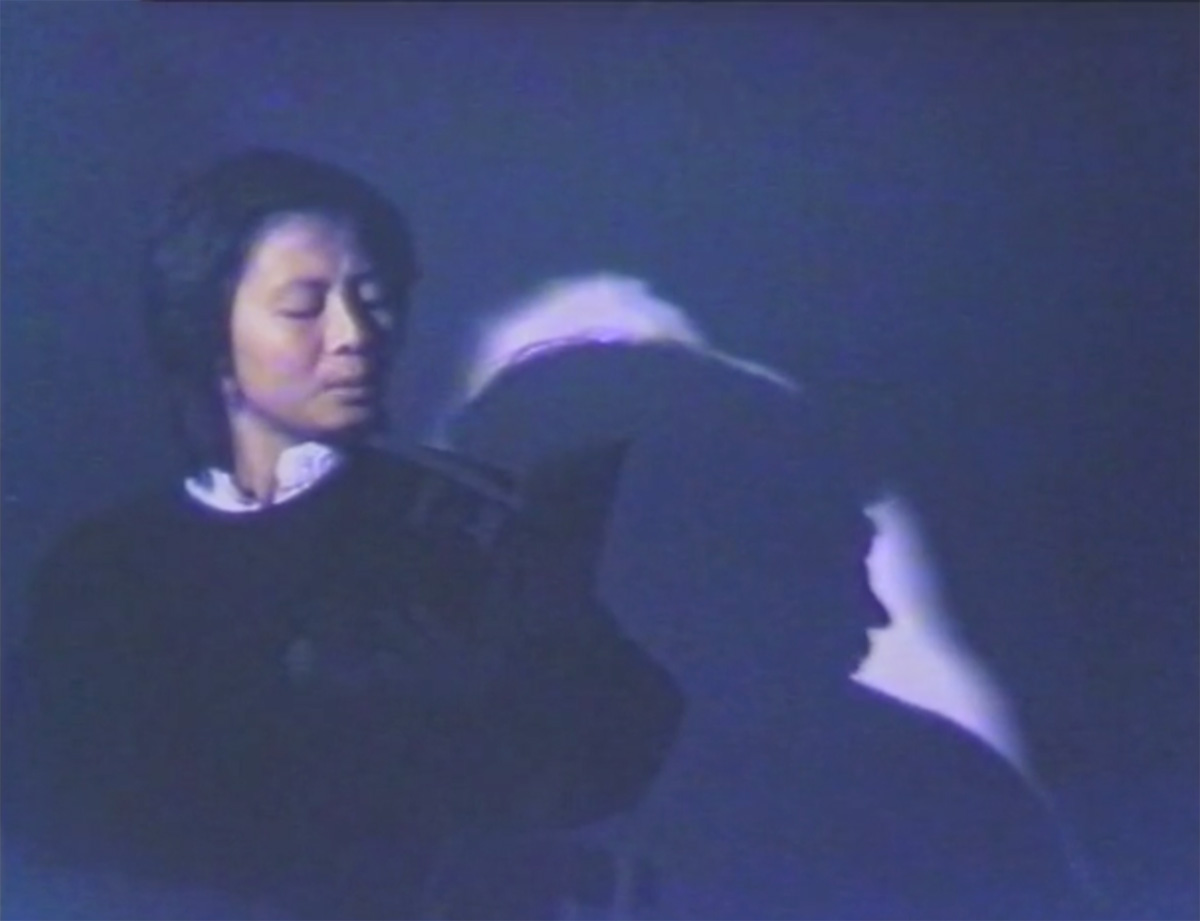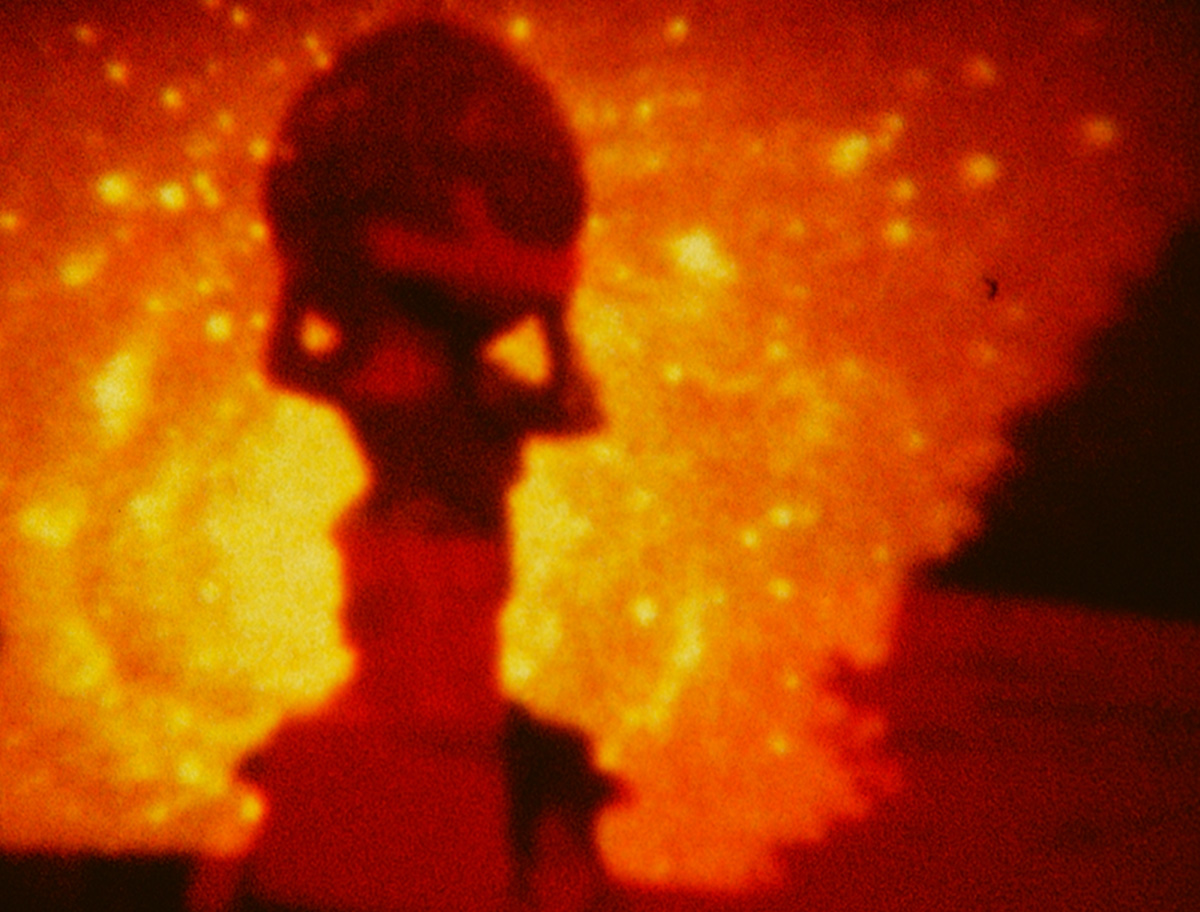SCREENING THREE - Territories / Emergence / In the Shadow of the Sun
Introduced by Kodwo Eshun & Louis Henderson
Courtisane is een platform voor film en audiovisuele kunsten. In de vorm van een jaarlijks festival, filmvertoningen, gesprekken en publicaties onderzoeken we de relaties tussen beeld en wereld, esthetiek en politiek, experiment en engagement.
Courtisane is a platform for film and audiovisual arts. Through a yearly festival, film screenings, talks and publications, we research the relations between image and world, aesthetics and politics, experiment and engagement.
Introduced by Kodwo Eshun & Louis Henderson

Looking at the history of Carnival in Britain as a subversive phenomenon, Territories views cultures and languages as markers that attempt to define the boundaries of both metaphorical and real territories. The film juxtaposes — and often superimposes — original and archival materials: footage of festive street life and rioting during Carnival, of police surveillance, of white and black British men and women exchanging desiring and alienated glances while vying for control of social space, and of the desolate urban evidence of abandonment and neglect.
“In Territories, the growing power of organized sound and music counterpoints the visual montage and is articulated with it aesthetically. Our narrators sit at a Steenbeck editing machine, underscoring their responsibilities as mediators, but the DJs and MCs who make up People’s War are not positioned at that distance. Under the time-stretching impact of what we must call a dub aesthetic — one grasping the shock that only the unintelligible can communicate — the film demands to be encountered as a remix. Its repeated phrases, oscillations, and orchestrations depart from reggae; their relocation to the gray northern metropolis has opened them to the emergent power of hip-hop and what we used to call ‘electro’. ... Here is the demotic pulse of a truly populist modernism and we do ‘Feel Like Jumping’. Its dissident spirit is propelled by the energy of ritual repetition, of ceaseless versioning. “ (Paul Gilroy)

Pratibha Parmar made her first video work with the help of Black Audio Film Collective as “a way of saying something about the emergence of Black women and Asian women as cultural artists and cultural activists”. Emergence interweaves the diasporic voices of four women of color: Audre Lorde, Mona Hatoum, Sutapa Biswas, and Meiling Jin. Transporting diasporic identities across a landscape of white noise and silence (soundtrack by Trevor Mathison), alienation, and fragmentation, Emergence moves toward the reintegration of speaking, performing subaltern subjects.
“Emergence is a performative multi-voiced and multi-enacted ritual visual poem that moves women of color, as the voice-over states, ‘from yesterday’s silence to tomorrow’s dreams’. Woman as speaking subject, gazing subject, interrogating corporeal performative subject owns spatiality in an arena that once depended upon her invisibility, her silence, and the suppression of her performing body. Emergence works to recover subjected forms of knowledge. Parmar invokes a performative ethnographic to move across the landscapes of colonial division, in the process underscoring the need for an ‘ethnographic ear’, as defined by Anglo-Asian cultural critic Jenny Sharpe. Sharpe finds that ethnographic listening ‘exists between and not within cultures ... beside every native voice is an ethnographic ear’.” (Gwendolyn Audrey Foster)

In the Shadow of the Sun draws upon Derek Jarman’s interest in alchemical processes as a metaphor for reprocessing Super-8 film. Originally called English Apocalypse, the film’s final title is derived from a 17th Century alchemical text that used the phrase as a synonym for the philosopher’s stone — the highly sought substance that turns base metals into gold and silver. The film, with a score by Throbbing Gristle, was intended as a step toward the idea of an ambient video, that like its musical counterpart, was designed to enhance an environment.
“In the Shadow of the Sun is a fire film, an English Apocalypse... related to John Dee and alchemy where the distinction between words and things is obscured by the identification of symbols with things... The images are fused with scarlets, oranges and pinks. The degradation caused by the refilming of multiple images gives them a shimmering mystery/energy like Monet’s ‘Nympheas’ or haystacks in the sunset. There is no narrative in the film. The first viewers wracked their brains for a meaning instead of relaxing into the ambient tapestry of random images. The language is there and it is conveyed — and you don’t know what you have to say until you’ve said it. You can dream of lands far distant.” (Derek Jarman)